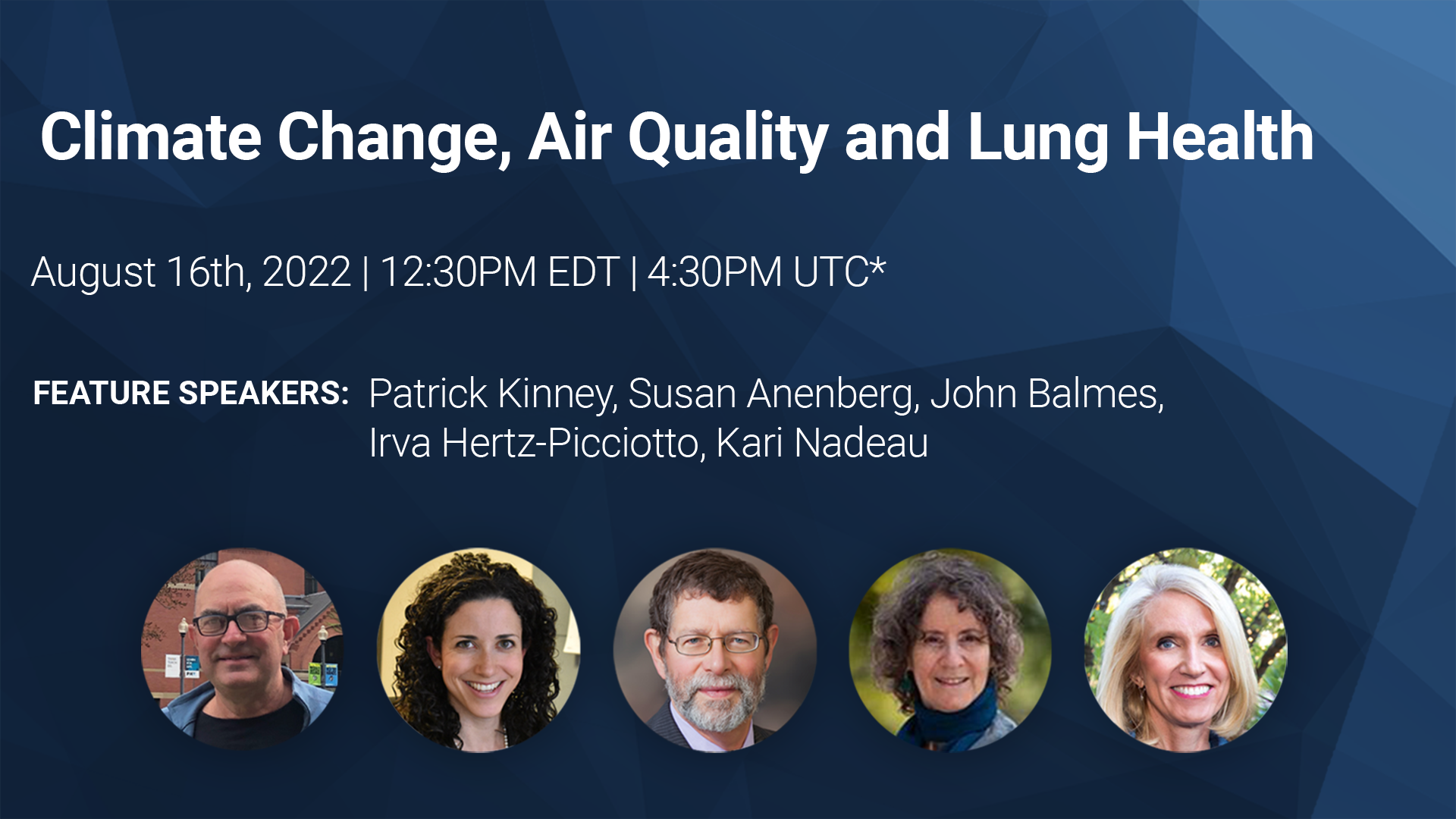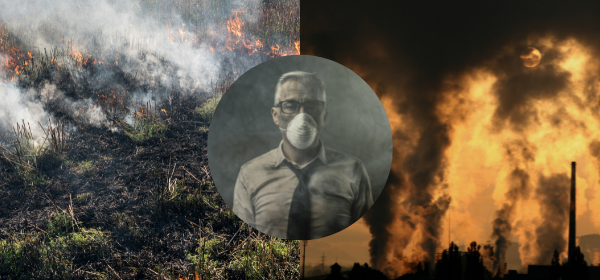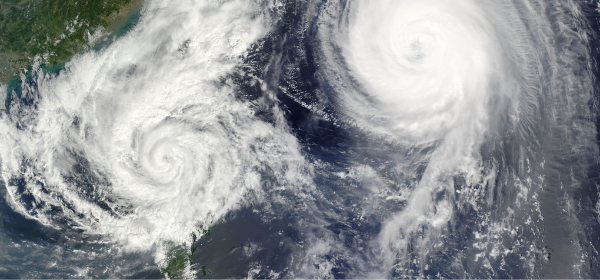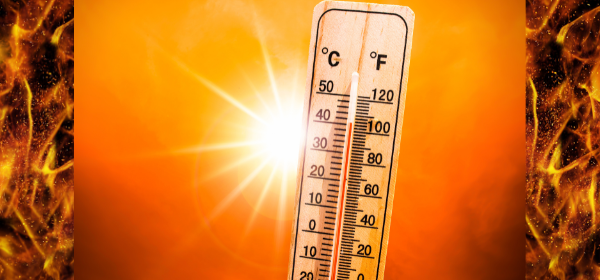Extended Q&A on Climate Change, Air Quality and Lung Health
With over 550 registrants from around the world, last week's free ePanel on Climate Change, Air Quality and Lung Health was a huge success. In fact, there was so much interest from the global scientific community that we received far more questions from the audience than could be answered during the live Q&A session, so we are providing those answers for you here! Below our experts answer your remaining questions and provide additional reading resources to learn more about how climate change, wildfires and air pollution impact lung health. Covering everything from particulate toxins in wildfire smoke, to long term impacts on yet unborn children, to large scale public policy efforts, we examine the latest research and public health initiatives to curb these damaging effects on human health.
If you missed the event, not to worry! The video recording is now available On Demand!
Watch the Recording of the Event and Find Out More About the Panelists Here
Extended Q&A with Panelists
What exposures and toxins result from wildfire smoke?
Dr. Hertz-Picciotto: The smoldering stage produces far more PAH's and other very toxic chemicals. Our team published a paper showing thousands of largely unknown chemicals in the smoke when structures are hit by wildfires that are not present when forests and grassland burns...due to the large numbers of synthetic chemicals in our built environment. More research needs to be done to understand the toxicity. Reference is Young et al. Environ Sci & Technol 2021, with data on ash samples from incinerated homes vs. parkland during the 2017 fires.
Keystone Symposia: Toxicity of wildfire smoke can go beyond the lungs, impacting brain function as well.
Dr: Nadeau: Agree, more research is needed and we are studying the wildfire smoke composition at the Woods Institute at Stanford to determine the identity of many of its features. I am glad we can all work together on this.
What impacts does wildfire smoke exposure have on young children, and pregnant women?
Dr. Hertz-Picciotto: UC Davis has been conducting longitudinal studies of rhesus macaques that were exposed at a young age to a heavy plume in 2008, and they experienced smaller lung volume and a range of immune dysregulation. Exposure during pregnancy even impacts the yet unborn child later in life. In rhesus macaques, dysregulated immune markers persisted from early postnatal life to adolescence to adulthood. Work published by Lisa Miller and her lab. Additional references include:
- Adverse biobehavioral effects in infants resulting from pregnant rhesus macaques’ exposure to wildfire smoke John P. Capitanio 1,2, Laura A. Del Rosso1, Nancy Gee3 & Bill L. Lasley3
- Effects of the 2018 Camp Fire on birth outcomes in non-human primates: Case-control study Bryn E. Willson a,*, Nancy A. Gee b,c, Neil H. Willits d, Lijuan Li e, Qi Zhang e, Kent E. Pinkerton b,c, Bill L. Lasley b,c
Keystone Symposia: Exposure to wildfire smoke may even have an impact before inception, altering DNA of sperm in male mice exposed to simulated wildfire smoke. In rats, exposure of fathers to wildfire smoke before inception impacts the behavior and cognition of their offspring. These study indicates that not just maternal exposure, but paternal exposure also can be a risk to the next generation, and at earlier stages than previously thought.
- Simulated Wildfire Smoke Significantly Alters Sperm DNA Methylation Patterns in a Murine Model
-
Paternal Biomass Smoke Exposure in Rats Produces Behavioral and Cognitive Alterations in the Offspring
What laboratory tests are been used as a biomarkers for determining the level of toxicity in air pollution as it affects lungs health.
Dr. Balmes: Multiple biomarkers have been used to assess the respiratory toxicity of air pollution. If airway fluid is obtained by either bronchoscopy or sputum induction, inflammatory cells (e.g., neutrophils) and/or pro-inflammatory cytokines (e.g., IL-8) can be measured. One can also assess pollutant-induced airway injury with various biomarkers (e.g., club cell protein-16). The level of oxidative stress induced by inhaled pollutants can be assayed in blood or urine (e.g., 8-isoprostane).
Dr. Nadeau: There are several biomarkers that have been studies that are part of CLIA approved laboratory clinical tests to determine the immune inflammation associated with air pollution (IL-8, C reactive protein, IL-1b). References:
- Respiratory Effects of Exposure to Diesel Traffic in Persons with Asthma, New England Journal of Medicine.
-
Immunologic effects of forest fire exposure show increases in IL-1β and CRP, Allergy
Are laboratory tests used as diagnostic pointer in assessing health risks as relates to effects of climate change on humans health?
Dr. Balmes: Not really at this point, but individuals with pre-existing heat, lung and/or metabolic disease are at greatest risk.
Dr. Nadeau: There are laboratory tests that can be used in conjunction with clinical history and clinical findings on physical exam and symptom questionnaires. Laboratory tests that indicate dehydration (BUN/Cr) from drought or stress (cortisol levels) or heat stress (heat shock proteins) or air pollution (CRP, IL-1b) or toxic exposure (Pb, Hg or other toxic metals in the blood) or infection due to vector borne diseases. These all can be used to help researchers and physicians understand to what extent climate change and climate change related events have led to changes in the body.
Please can you talk more about the markers that can help predict temperature and air pollution levels in really polluted communities
Dr. Balmes: Characteristics of communities disproportionately burdened by pollution and heat include a high proportion of low-income people of color; high density traffic with heavy-duty diesel vehicles; land use involving industry, power plants, or transportation hubs; high-density and crowded housing; lack of air conditioning; little green space.
Dr. Nadeau: There are a number of markers of heat stress (heat shock proteins, oxidative stress markers), air pollution (epigenetic changes, CRP, IL-1b, others) that have been published, see reference below:
Climate change will result in multiple hazardous exposures (e.g. wildfires, heat, air pollution, etc.) over time. Should future longitudinal studies still focus on individual exposures? Or is a cumulative/aggregate exposure metric a better way to evaluate climate change effects?
Dr. Balmes: It depends on the purpose of the study – to improve understanding of specific health effects or of overall public health impact.
Dr. Hertz-Picciotto: I think studying either is actually quite complicated. For example, even if you are interested in the impact of a particular wildfire, we have a long way to go to understand what the actual chemical exposures are, as they are not homogeneous at all, changing over time and across geography/topography, dependent on the fuel mix (vegetation and what type it is; structures of different ages; both) as well as with temperature, wind, and other meteorologic factors. Additionally, the mental stresses of a particular event cannot be ignored, and will likely exacerbate the physical health impacts. But as for cumulative exposures , even limiting to wildfires, say, that is a new frontier and we will need to develop the appropriate metrics to identify which are most effective at predicting health outcomes.
Do heat stresses and pollution affect different areas of the lung? My understanding is that heat doesn't necessarily penetrate deeply into the lung, whereas particulates and toxins tend to make it all the way to the alveolar spaces?
Dr. Balmes: Heat stress affects the cardiovascular system and not really via the lungs.
- Find out more about heat stress at our next event, Heat, Health and Inequity, on September 26! Register Now for the free event!
The title of the presentation mentions lung health, which is important. However, the most acute effects of PM2.5 pollution are cardiovascular (cardiac and stroke).
Dr. Balmes: Correct and co-exposure to PM2.5 and heat puts compounded stress on the cardiovascular system.
Dr. Hertz-Picciotto: Other effects include neurologic, immune, reproductive, …
The scientific community is quite homogeneous in understanding and fighting the health risks of CC and air pollution, whilst the policy makers are not, with a clear divide among progressive and conservative individuals. What shall be done to overcome such divide? GViegi
Dr. Balmes: Dear Giovanni, thanks for participating in our epanel. I wish I knew the way to bridge the policy divide that exists. My approach has been to try to make clear that climate change is an existential threat to all individuals that must be met with effective policy actions. Those actions can be both in line with a conservative market-based approach to reducing carbon emissions (e.g., tax and dividend) or a progressive government-mandated approach (e.g., elimination of coal-fired power plants).
Dr. Hertz-Picciotto: The disasters that are being wrought by climate change are not very respectful of whether it is a blue or red state, of political boundaries more generally, gerrymandering, etc. If storms have destroyed your home, it becomes harder to chalk up the extreme weather events to bad luck. It seems that the public is being moved towards a more general recognition of climate change, even if they don’t all agree with the role of human activities (see: https://www.pewresearch.org/science/2020/06/23/two-thirds-of-americans-think-government-should-do-more-on-climate/) . I’m guessing a lot of Republicans are looking for electric and hybrid vehicles these days! Working on adaptation strategies might therefore be a more likely place where the gap can be bridged.
Regarding interventions - do any of the panelists have experience with Community-Based Participatory Research within this topics? If so, lessons learned?
Dr. Hertz-Picciotto: Many of the firefighting organizations are beginning to work with indigenous fire experts...this is starting to happen. But there are communities that don't want to have prescribed burns in their communities.
- More on indigenous fire expertise HERE at NPR.org
Regarding reduction in GHG from heat: tree planting can be very effective. And bring in the engineers, who are the most effective and creative folks for this problem. Also weatherizing homes...there are many old leaky homes that are often inhabited by those with the least economic means, and whose AC is not very effective.
Are co-benefits attributed to green spaces looked at and design of new green spaces? There are few emerging studies.
Dr. Balmes: Good point, benefits of green spaces are both health and environmental – decreased stress, encouragement to exercise, relief from the urban heat island affect, etc.
Dr. Hertz-Picciotto: City planners have a key role to play in this issue, and in ensuring the right kind of vegetation: tree canopy to combat heat islands, where needed, while in wildfire prone areas, low vegetation can become dangerous fuel –need ‘defensible space’ around buildings. Some plants are more flammable than others.
Dr. Nadeau: This is a very helpful study to review:
What future directions would you like to see public health departments pursue in combatting or mitigate the impact of climate change for health?
Dr. Balmes: To develop and implement plans to improve resilience as we adapt to climate change – increased urban green spaces, incentives for decarbonization of homes and buildings, provision of publicly available clean air and cool rooms, subsidized purchase of portable HEPA air filtration devices for low-income families in wildfire-prone areas, etc.
Dr. Hertz-Picciotto: Conduct broad public education campaigns on reducing GHG emissions, install solar panels on their own buildings and green their operations. There is a major need for education about heat stress in most communities that are experiencing increasing summertime temperatures: heat stress comes on surreptitiously, and when people are dehydrated they do not realize what is happening, as their ability to think/reason becomes impaired. There is a cascade of issues, where heart and circulatory systems are stressed, kidneys, brain, and it can be a rapid downward spiral: Public Health departments should be conducting mass education using social media, billboards, and traditional media to make everyone aware of the symptoms so that they recognize it in others and act quickly, because this is a condition that can rapidly spiral out of control and leave permanent damange or lead to death.
Other areas where Public Health departments can act: Develop programs of assistance for weatherization, community tree plantings; work with the transportation sector on ways to encourage public transportation, bicycling, etc. Recognize the role of climate change and climate disasters on mental health and develop programs to train para-professionals who can assist with mental health needs during and after crises, particularly for youth, who are a vulnerable subgroup. Encourage neighborhoods to prepare for disasters and become aware of those who may need extra assistance: the elderly, disabled. And by the way, the private sector can assist with all of this!
What future research is needed to advance this field?
Dr. Balmes: Fine particulate matter in the air, including that due to wildfire smoke, increases risk for infection and severity of disease with COVID and other viral infections— I would like to see interdisciplinary studies conducted to examine the mechanism of how air pollution increases risk of respiratory infections. I would also like to see studies done to better understand the relative toxicity of wildfire smoke particles versus non-wildfire ambient particles.
Dr. Hertz-Picciotto: We need to increase our understanding of wildfire smoke, which is competing with traffic-related pollution as the primary contributor to human air pollution exposures in California and other western U.S. states. This includes the chemical and particle composition, the compositional changes over the ‘life’ of the fire and how and where the plumes travel. Second, we need to address the disparities in vulnerability, including a clear focus on who gets the highest exposures, and what factors amplify susceptibility to adverse health effects for any given level of exposure, which may include: age, mobility, outdoor workers, underserved/marginalized communities, and pre-existing conditions, including chronic respiratory and mental health, disabilities, and many others.
Third, research is needed on areas where wildfire smoke tends to be greatest and determine those where the public health and healthcare workforce are inadequate to the needs, so that the gaps in services can be remedied. Fourth, studies should be undertaken to understand resilience and what kinds of interventions are most effective at reducing the impacts of wildfires on lung health and other outcomes. Lastly, research should take a broad social frame, to include housing, sanitation, food insecurity, and the infrastructure that sustains inequities and permits exploitation of disasters to the detriment of those already most vulnerable.
Dr. Nadeau: I think we need to focus on how to impact public health ministers to see this as a real issue. We need to frame our research to influence policy-oriented outcomes. For example, solution-based research that provides cost-benefit analysis of a particular intervention or mitigation measure will help drive policy decisions by raising awareness for the cost of inaction and the long-term gains. In addition, we need to focus on justice in terms of benefits and health equity, which includes education to help those most disenfranchised.
Dr. Anenburg- I would put effort into 3 buckets: 1) better characterization of the link between air pollution and health damage, 2) better documentation of local health benefits after mitigation measures have been imposed and 3) Better communication with the public and decision makers to facilitate change, which may require some interdisciplinary work with social scientists as well.
Dr. Kinney: I would invest in what can an individual do to reduce their exposure-- If there is wildfire smoke or air pollution outside, how do you keep it from affecting your indoor air quality? Should people mask indoors during these times? Is there air filtration technology that can be deployed? Insurance should cover HEPA filters. But there are also clear socioeconomic impacts to consider here, as those living in apartments have less control over their ventilation.
See other events in the Open Access Climate Health ePanel Series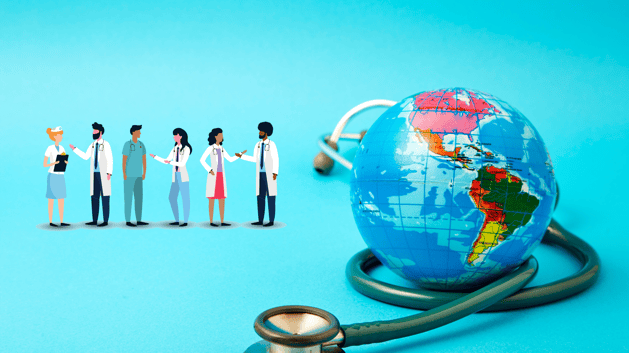
Also check out our Climate Health Master Class Series, for essential background and presentations from field leaders!
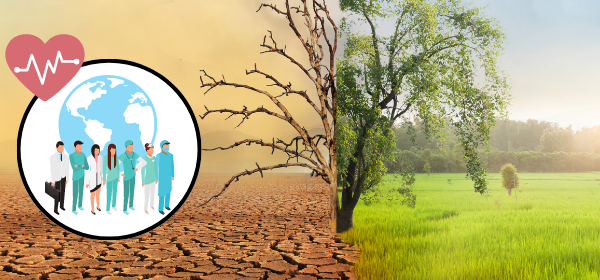

Related news
Climate Change, Air Quality and Lung Health Free ePanel Event, Now Available ON DEMAND
Climate change driven wildfires and increasing air pollution are degrading air quality worldwide,...
Climate Health, Extreme Weather Events & Compounding Disasters free ePanel- Now ON DEMAND
Climate change is increasing the severity and frequency of climate-related extreme weather events...
Extended Q&A on Heat, Health & Inequity
On September 26th, over 90 people tuned in from around the world, from California to New Orleans,...
